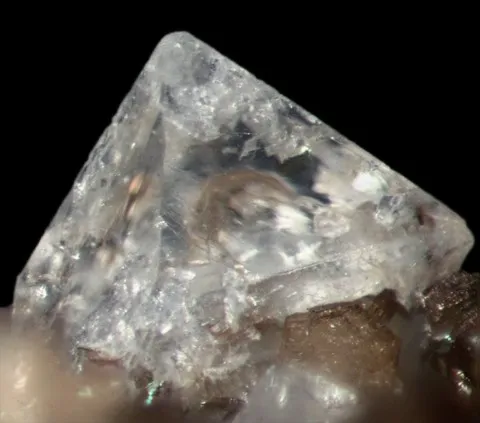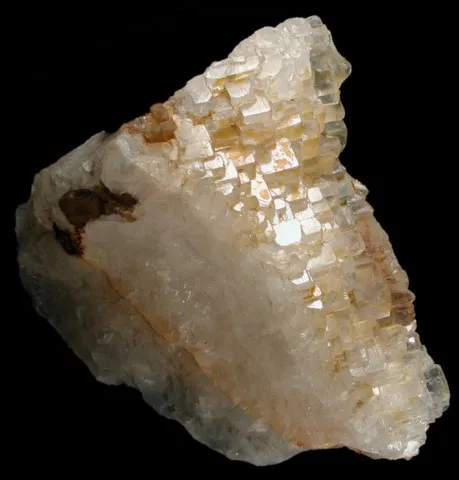CRYOLITE
Class : Halides
Subclass : Fluorides
Crystal system : Monoclinic
Chemistry : Na3AlF6
Rarity : Rare
Cryolite is a rare fluoride found in pegmatites. This mineral was the basis of the aluminum industry before the discovery of the bauxite transformation process by Ste-Claire Deville in the 19th century. It takes its name from the Greek kryos (cold) and lithos (stone), because of the resemblance of its crystals to ice. Cryolite sometimes forms large masses (6 meters at Ivigtut in Greenland) of a white, translucent hue accompanying siderite, microcline, topaz and other fluorides. Pseudocubic crystals with tri-rectangular cleavages are very rare and do not exceed 4 cm ; they usually form groups with parallel axes. Twins are common. Its role as a flux in the aluminum industry having now ended, cryolite no longer has any industrial application.
Main photo : Cryolite from Ivigtut Mine, Arsuk Fjord, Groenland © Kelly Nash
Cryolite in the World

Photo on right : Cryolite from Poudrette quarry, Mont St-Hilaire, Canada © Modris Baum
Twinning
Many twins are known (11 in total) for this mineral species.
Fakes and treatments
No fakes listed for this mineral species.
Hardness : 3 to 3.5
Density : 2.96 to 2.98
Fracture : Irregular
Streak : White
TP : Translucent to transparent
RI : 1.339 to 1.340
Birefringence : 0.001
Optical character : Biaxial +
Pleochroism : None
Fluorescence : Red
Solubility : Sulfuric acid
Magnetism : None
Radioactivity : None

